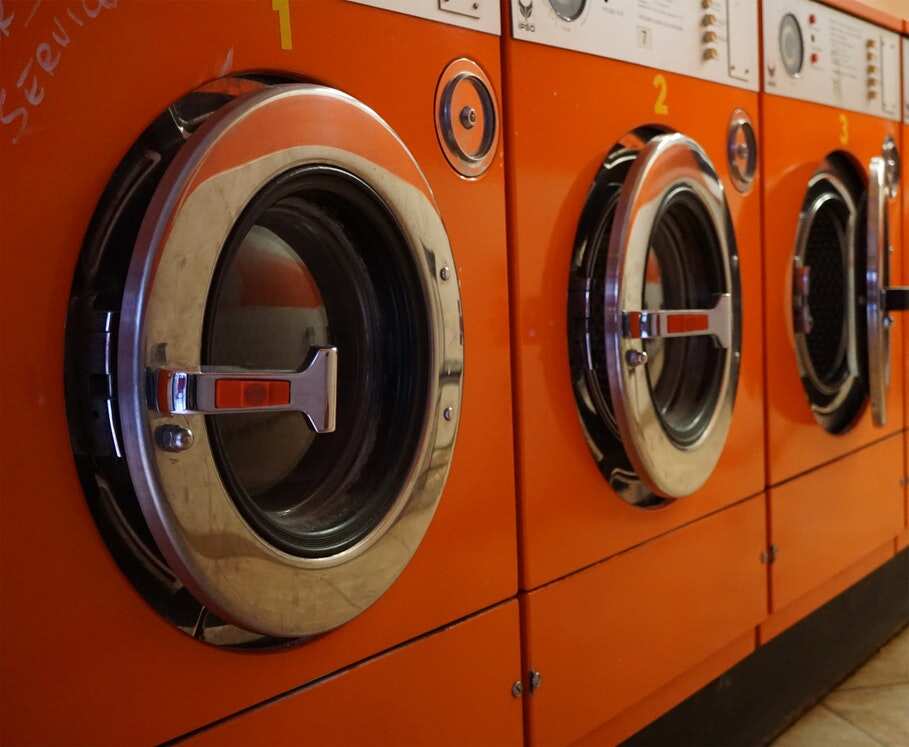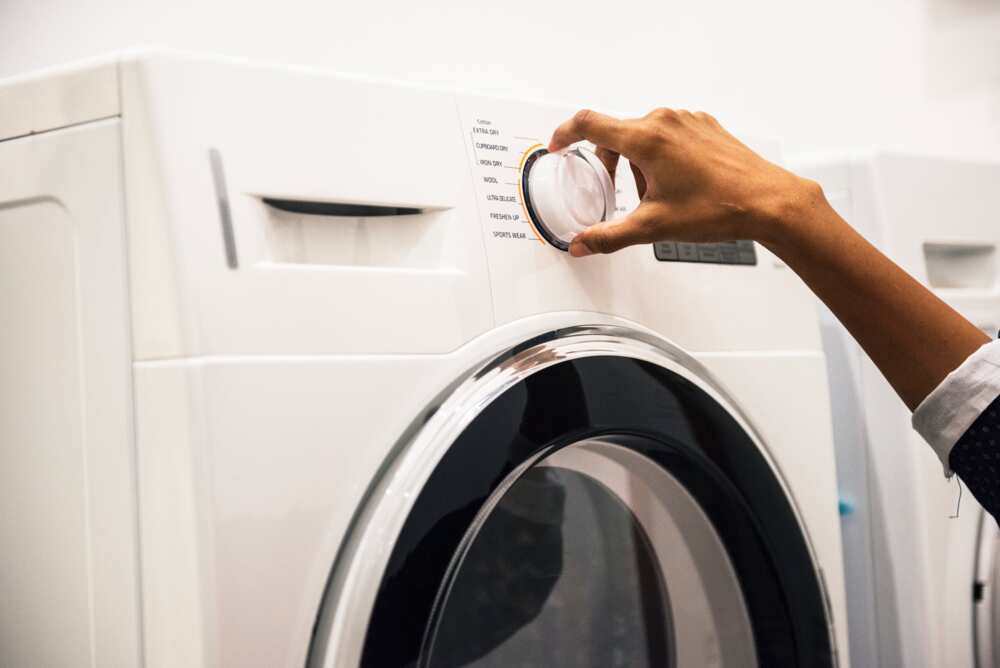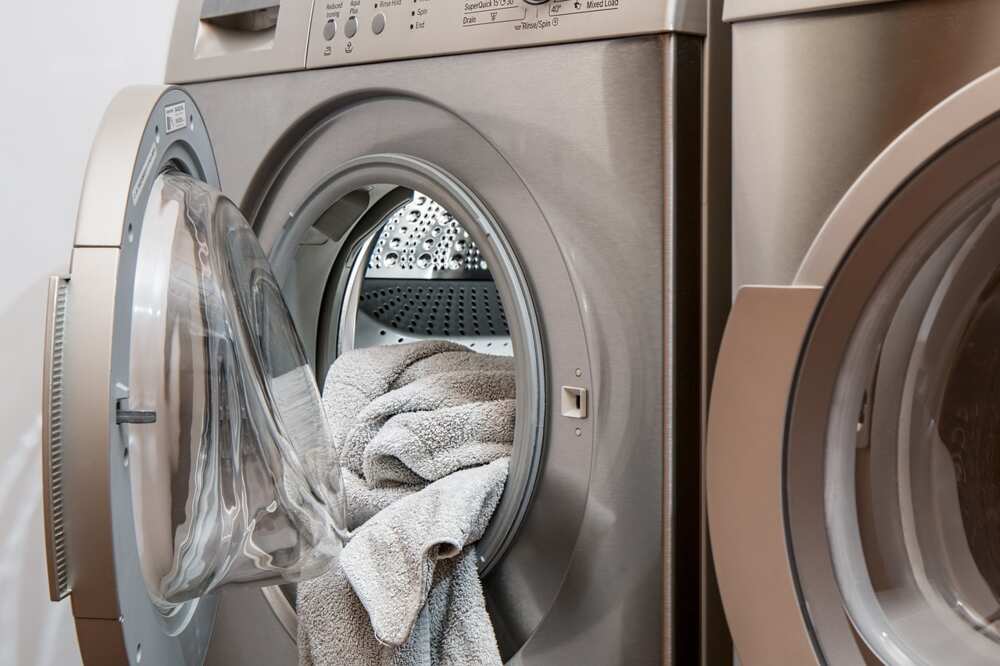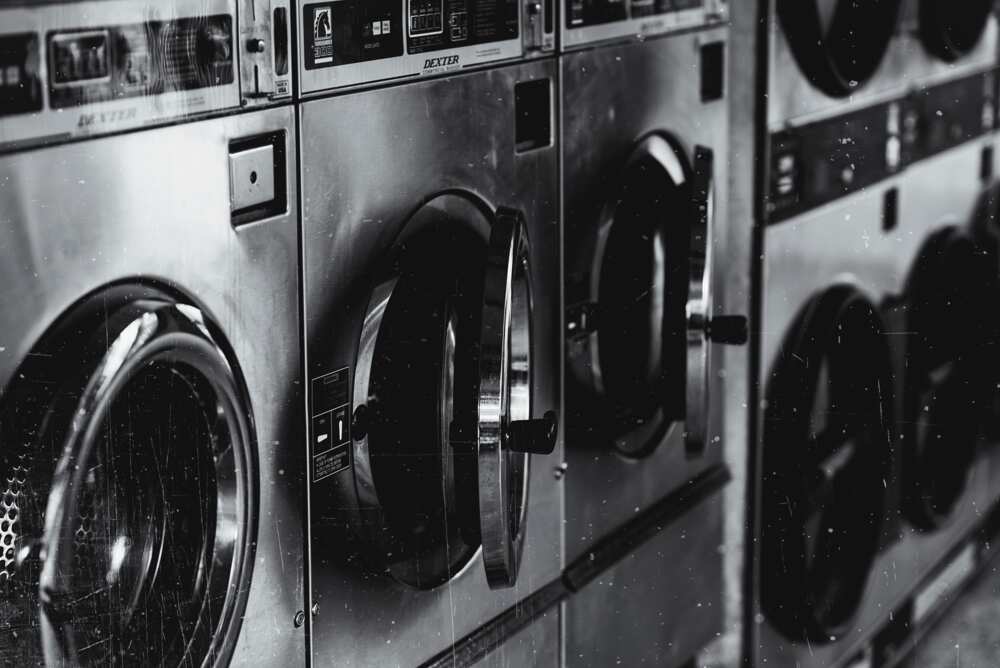All machines can break down one day, and your washing machine is no exception. Knowing how to clean washing machine timely and effectively will help you reduce or even avoid additional expenses on servicing. Right now, you will be surprised to discover how easy it is! You do not even need any additional devices to do this except the ones that you already have in your house!

Image: pexels.com
Source: UGC
A washing machine is an essential device in a modern home, but it has its own temper and demands! It reacts to the softness of water and quality of detergents that you use. In separate cases, the frequency and intensiveness of washing cycles can play their part. Now, it is time to discover several simple and cheap methods of cleaning of the essential parts of your little helper, to remove unpleasant odours, mould, and scale.
The most important tips: how to clean washing machine
How often is it necessary to do this cleaning? What do you think? Specialists insist on once in two to three months. If you have not done it for a longer time, you should not worry because it is better late than never. However, keep in mind for the future: if you have pets, you may need to do it more often.
There is a fast and straightforward way to detect that your device needs some care: you may notice that your laundry is not as clean as you want after you take it out of the machine. Any dramatic drop in performance quality is a sign that something goes wrong. Timely, appropriate steps can avert many troubles.
Simple magic: how to clean a smelly washing machine

Image: pexels.com
Source: UGC
Unpleasant odours that appear inside the device and even remain on freshly washed clothes cause a lot of trouble. Their source must be removed at once because it can be extremely dangerous to health. The dark and wet gutters in the seal and between the seal and other parts of the machine often harbour mould and fungus. Examine the seal and inside of the cylinder carefully. If you see big stains of mould that give off a strong unpleasant reek, the situation is serious.
You can remove usual fungus with the help of bicarbonate of soda. Significant stains of mould need a more powerful means, for example, bleach. However, you need to remember that it is not recommended to use bleach too often: it can ruin and deform rubber parts.
Take a sponge, wet it slightly, pour some bicarbonate of soda (or bleach) over it and rub all the gutters and folds of the rubber parts. Act carefully because any deformations of the rubber parts will cause leakage. Then move to the cylinder if you have also noticed mould and fungus there. When finished, remove all the remnants of the dirt with the help of a wet cloth or another clean sponge.
READ ALSO: How to clean headlights yourself: Top tips
You need to keep in mind that working with mould needs care and attention. Use rubber gloves and try to complete the cleaning as soon as you can in order to inhale as little mould spores as possible. Here are several useful tips that will help you prevent the propagation of mould and fungus inside the device:
- Do not store dirty clothes inside the washing machine. It creates a perfect environment for the development of mould and fungus due to humidity and warmth. Both your clothes and the machine will be infected!
- Leave the door open after the washing is finished. Natural ventilation will help the cylinder dry faster!
- Mop the seal after the washing is done, remove the remnants of water, detergent, and other contamination that may cause the propagation of mould!

Image: pexels.com
Source: UGC
There are several reasons why your washer may reek:
- Some detergents and conditioners (of low quality) can stick to the sides of the cylinder and drawer. With time, their remnants start to give off unpleasant smells
- Mould can affect the drawer, too. It is necessary to remove the drawer once in a month and wash it with warm water
- Your washer has a waste filter that is meant to catch large particles of waste, buttons, small coins, and so on. It is necessary to clean this filter once in six months; otherwise, everything it has caught starts to decay in it
- If your device is rather old, it is possible that the drain pipe has developed a layer of dirt and mould inside it. To remove this sediment, turn the machine on with an empty cylinder and at the highest temperature. If the reek stays, the pipe needs replacement
You may encounter other recommendations on how to clean washing machine seal, but it is not recommended to use other means that are more aggressive or abrasive than soda. At least, it is not recommended to use them very often. In spite of its durable appearance, the seal can be damaged quite easily.
Just a couple of tricks: how to clean washing machine drawer
Every machine has a drawer where you put detergents: powders, liquids, conditioners, and so on. It needs cleaning every two or three washing cycles. Such frequency will save you from nightmarish problems when remnants of solid detergents block outlets and do not let water into the drawer.
Take the drawer out (it is easy, no matter whether the device is front or top loading; just follow the signs on the machine). Act carefully and gently in order not to break any fragile plastic parts. There is no need to use any additional detergents because some solid remnants always stick to the inside. Use a sponge and running water. Remove all the solid pieces and make sure all the openings are clean.
Let the drawer dry. If possible, leave it in the open air and direct sunlight. Ultraviolet will kill bacteria and fungus. When the drawer is dry, install it back.
READ ALSO: How to remove adhesive from skin after taking a band-aid off
Sometimes, you may notice some scale inside the drawer, too. You can remove it with the help of a little citric acid. Just pour some citric acid crystals into the drawer, add several drops of water, gently rub the scale with the acid mass and leave for several minutes.
Then, remove the contamination with the help of a sponge. If some scale remains, leave it be for the next time. Too much aggressive cleaning means and manipulations can damage the plastic.
Make it shine: how to clean a front loading washing machine with vinegar and baking soda

Image: pixabay.com
Source: UGC
Even if you use soft water, with time, your device will accumulate a lot of scale. You may not see it with your eyes, but you will notice it. The device will start to smell unpleasant, clothes will be poorly washed even with the best detergents. These are alarming signs which you should not ignore.
There are two types of scale. Minerals from water gradually form sediments on the cylinder and electric heater. It is a solid scale that needs to be dissolved chemically. Another type of scale develops from detergent remnants that stay in the cylinder because you overload the machine with either clothes or detergents.
You can check whether there is the detergent scale inside the machine easily. Take a usual towel and place it into the empty washer. Turn it on and choose a high-temperature quick mode. Do not add any detergents. In several minutes, you will see: if there is foam, your cylinder is covered with detergent remnants.
So, how to clean washing machine with vinegar and baking soda. Take three cups of vinegar and ½ cup of baking soda. Put soda into the drawer and add vinegar into the cylinder. Choose the longest mode with the highest temperature. Remember not to load clothes. The cylinder must be empty.
Turn the device on and wait until the whole cycle is over. When done, switch over to a rinsing mode and let the device complete the whole cycle again. This one is supposed to remove the detergent sediment from the cylinder.
Be very careful and do not use vinegar immediately after a washing cycle in which you have used chlorine detergents. Vinegar and chlorine must never be mixed!
Do it effectively: how to clean washing machine with soda crystals
Not everything that is commonly called soda is the same, actually. Baking soda is the gentlest means that can be used for both cleaning and cooking purposes. Soda crystals are meant for washing and cleaning only. It is much more aggressive compared to baking soda, and it must never be used for food purposes.
However, soda crystals are perfect for cleaning and killing bacteria. If you decide to use it, make sure you have a pair of reliable rubber gloves to protect your hands. Take one part of crystals and one part of water and mix well. Apply the mixture onto the inside of the cylinder and the rubber seal. Work the rubber parts through thoroughly because crystals are effective against mould.
READ ALSO: How to clean a mechanical keyboard: the best way
Leave the mixture for about 30 minutes. Remove contamination with the help of a wet sponge. When done, turn the machine on without clothes or laundry and choose a quick mode. The device will complete the task for you and rinse the inside well enough.
Make sure that all the remnants are gone because soda crystals can damage colours and ruin natural wool and silk. Try to use such aggressive means every second or third time you clean the washing machine. Baking soda will cope perfectly well in regular routine cleaning.
Kill all bacteria: how to clean washing machine with bleach

Image: unsplash.com
Source: UGC
Cleaning means that contain chlorine are known and loved for their ability to kill bacteria, remove stubborn contamination and return whiteness to clothes and surfaces. Chlorine bleach can cope with practically every type of contamination inside your washer.
Use this means to clean the detergent dispenser if you discover mould in it. Just use an old toothbrush to reach all the tiny corners inside the drawer. Use bleach to clean the seal and remove mould. Mix bleach with warm water (1:1) and wash the seal with the help of a wet sponge or an old toothbrush. Use it to clean the cylinder from the inside. Pour 100 ml of any chlorine bleach directly into the cylinder and start a wash at a temperature no lower than 60°C. Do not load clothes or laundry, of course.
As we have already mentioned, chlorine should better not be overused for the sake of rubber safety. It is forbidden to mix bleach, or another chlorine means with anything except for clean water.
Now you possess some secret knowledge on how to clean washing machine without any special means or tools and even without a service specialist. These simple tips will help you keep your little helper always tidy and ready for work. Try these recommendations and enjoy the effect! The cleaner your device is, the longer its service will be.
DISCLAIMER: This article is intended for general informational purposes only and does not address individual circumstances. It is not a substitute for professional advice or help and should not be relied on to make decisions of any kind. Any action you take upon the information presented in this article is strictly at your own risk and responsibility!
READ ALSO: Wind vane: how to make and use
Source: Legit.ng News
from Nigeria News Today & Breaking Naija News 24/7 | LEGIT.NG http://bit.ly/2K9Qnxy
via EDUPEDIA24/7
Comments
Post a Comment